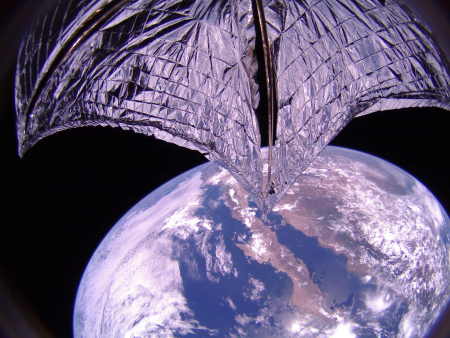China tests controlled flight for returning first stage
Chinese news sources today confirmed that during its last launch on July 26, they tested the use of grid fins (essentially copied from SpaceX’s Falcon 9) to control the return flight of the first stage of their Long March 2C rocket.
The success of the test is of great significance for improving China’s inland rocket landing safety, minimizing the inconvenience to the local people, as well as promoting the follow-up development of carrier rockets’ controllable recovery, soft landing and reuse, according to He Wei, an official with the CASC.
“The swinging grid fins were used to control the rocket debris’ direction and attitude, much like the wings of the debris,” said Cui Zhaoyun, the deputy chief designer of Long March-2C rocket. The landing site control of large and medium rockets is much more difficult than that of small rockets, he added.
For almost forty years China has allowed these first stages to crash, sometimes very close to villages and habitable areas. Now, inspired by what freedom and U.S. innovation has accomplished, they have finally begun the process of figuring out how to land these stages vertically. Since their propellants are very toxic, it is not clear however whether they will be able to reuse them should they succeed in landing them undamaged.
Chinese news sources today confirmed that during its last launch on July 26, they tested the use of grid fins (essentially copied from SpaceX’s Falcon 9) to control the return flight of the first stage of their Long March 2C rocket.
The success of the test is of great significance for improving China’s inland rocket landing safety, minimizing the inconvenience to the local people, as well as promoting the follow-up development of carrier rockets’ controllable recovery, soft landing and reuse, according to He Wei, an official with the CASC.
“The swinging grid fins were used to control the rocket debris’ direction and attitude, much like the wings of the debris,” said Cui Zhaoyun, the deputy chief designer of Long March-2C rocket. The landing site control of large and medium rockets is much more difficult than that of small rockets, he added.
For almost forty years China has allowed these first stages to crash, sometimes very close to villages and habitable areas. Now, inspired by what freedom and U.S. innovation has accomplished, they have finally begun the process of figuring out how to land these stages vertically. Since their propellants are very toxic, it is not clear however whether they will be able to reuse them should they succeed in landing them undamaged.




